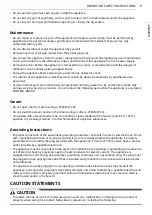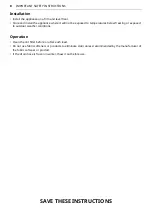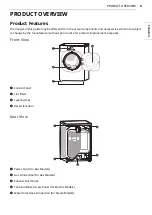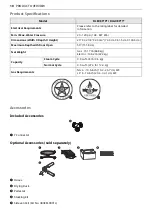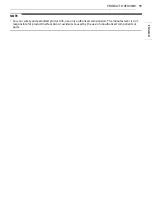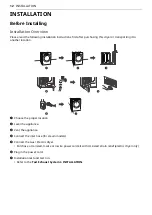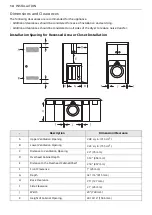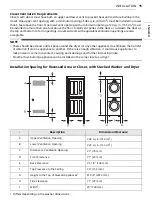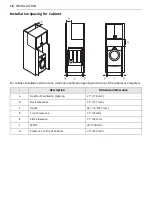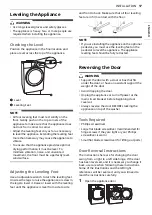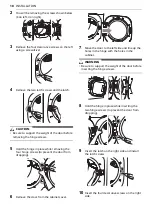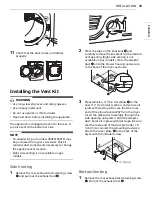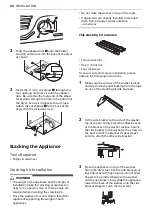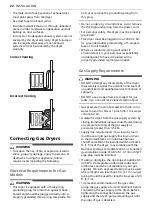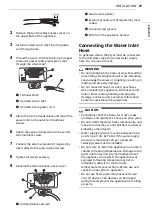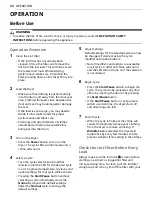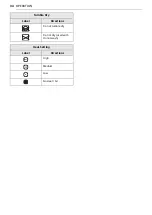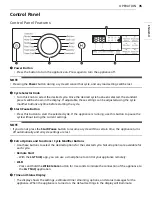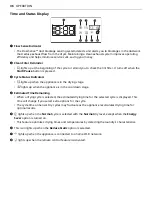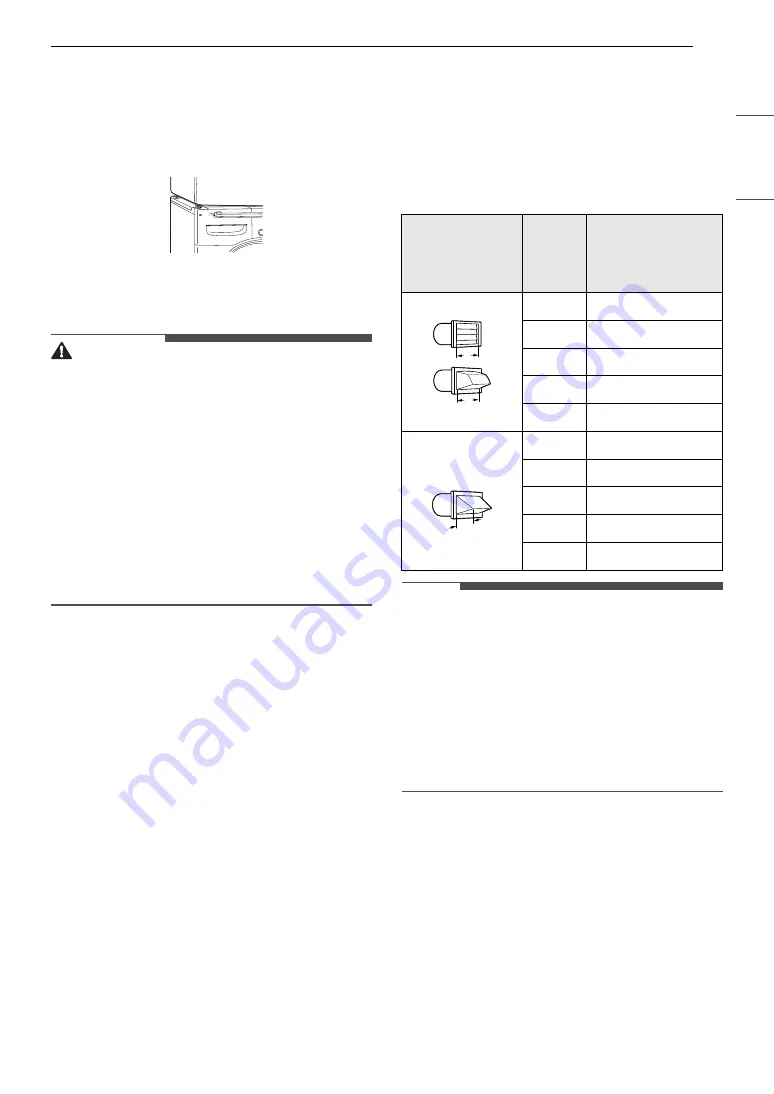
21
INSTALLATION
ENGLISH
4
Insert the front rail between the bottom of
the appliance and the top of the washer. Push
the front rail toward the back of the washer
until it comes in contact with the side rail
stoppers. Install the two remaining screws to
secure the front rail to the side rails.
Venting the Dryer
WARNING
• Gas dryers MUST exhaust to the outdoors.
• To reduce the risk of fire, combustion, or
accumulation of combustible gases, DO NOT
exhaust dryer air into an enclosed and
unventilated area, such as an attic, wall, ceiling,
crawl space, chimney, gas vent, or concealed
space of a building.
• To reduce the risk of fire, DO NOT exhaust the
dryer with plastic or thin foil ducting.
• Do not exceed the recommended duct length
limitations noted in the chart. Failure to follow
these instructions may result in extended drying
times, fire or death.
• Do not crush or collapse ductwork.
• Do not allow ductwork to rest on or contact
sharp objects.
• If connecting to existing ductwork, make sure it
is suitable and clean before installing the dryer.
• Venting must conform to local building codes.
• Use only 4-inch (10.2 cm) rigid, semi-rigid or
flexible metal ductwork inside the dryer cabinet
and for venting outside.
• The exhaust duct must be 4 inches (10.2 cm) in
diameter with no obstructions. The exhaust duct
should be kept as short as possible. Make sure to
clean any old ducts before installing your new
dryer.
• Rigid, semi-rigid or flexible metal ducting is
recommended for use between the dryer and
the wall. All non-rigid metal transition duct must
be UL-listed. Use of other materials for transition
duct could affect drying time.
• DO NOT use sheet metal screws or other
fasteners which extend into the duct that could
catch lint and reduce the efficiency of the
exhaust system. Secure all joints with duct tape.
• Ductwork is not provided with the dryer. You
should obtain the necessary ductwork locally.
The vent hood should have hinged dampers to
prevent backdraft when the dryer is not in use.
• The total length of flexible metal duct must not
exceed 8 ft. (2.4 m).
Ductwork
NOTE
• Deduct 6 ft. (1.8 m) for each additional elbow. Do
not use more than four 90° elbows.
• In Canada, only those foil-type flexible ducts, if
any, specifically identified for use with the
appliance by the manufacturer should be used.
In the United States, only those foil-type flexible
ducts, if any, specifically identified for use with
the appliance by the manufacturer and that
comply with the Outline for Clothes Dryer
Transition Duct, Subject 2158A, should be used.
Routing and Connecting Ductwork
Follow the guidelines below to maximize drying
performance and reduce lint buildup and
condensation in the ductwork. Ductwork and
fittings are NOT included and must be purchased
separately.
• Use 4-inch (10.2 cm) diameter rigid, semi-rigid or
flexible metal ductwork.
• The exhaust duct run should be as short as
possible.
• Use as few elbow joints as possible.
Wall Cap Type
No. of
90°
Elbows
Maximum length
of 4-inch
diameter rigid
metal duct
Recommended
0
65 ft. (19.8 m)
1
55 ft. (16.8 m)
2
47 ft. (14.3 m)
3
36 ft. (11.0 m)
4
28 ft. (8.5 m)
Use for only
short run
installations
0
55 ft. (16.8 m)
1
47 ft. (14.3 m)
2
41 ft. (12.5 m)
3
30 ft. (9.1 m)
4
22 ft. (6.7 m)
a
a
a: 4 ‘’ (10.2 cm)
b: 2.5 ‘’ (6.35 cm)
b

